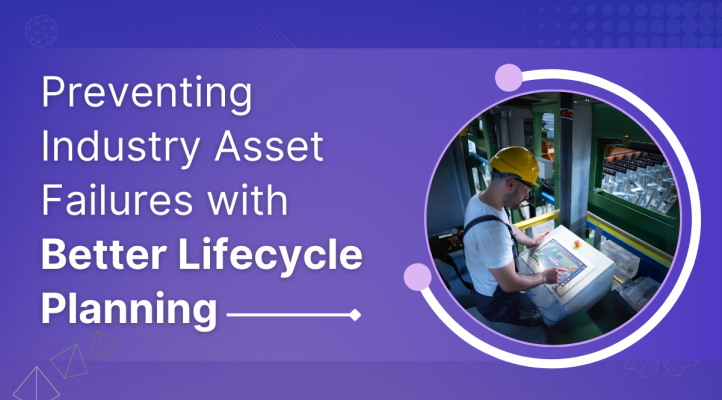Preventing Asset Failures with Better Lifecycle Planning

Organizations across various industries rely on complex machinery, infrastructure, and equipment to maintain smooth operations. A single unexpected breakdown can lead to significant financial losses, operational delays, and safety risks. Traditional reactive maintenance approaches often result in costly emergency repairs and prolonged downtimes. This has driven the shift towards lifecycle planning, a proactive strategy ensuring assets remain functional and efficient throughout their lifespan. Organizations can mitigate risks and enhance long-term asset performance by focusing on preventive measures and data-driven decision-making.
Understanding Asset Failures and Lifecycle Planning
Assets are essential to operational success, but their reliability depends on how well they are managed over time. Many failures occur due to inadequate Maintenance, aging infrastructure, or lack of predictive insights. Without a structured lifecycle plan, businesses may face frequent breakdowns, unexpected repair costs, and inefficiencies that impact profitability. Lifecycle planning provides a proactive framework that ensures assets are monitored, maintained, and optimized to perform efficiently throughout their useful life.
The Importance of Lifecycle Planning
Lifecycle planning involves assessing the entire lifespan of an asset, from initial investment to decommissioning. By incorporating proactive measures into each stage, businesses can extend asset longevity, optimize performance, and prevent failures before they occur. This systematic approach enables organizations to:
- Reduce unplanned downtime by anticipating maintenance needs.
- Minimize operational risks associated with sudden failures.
- Optimize asset utilization through data-driven decision-making.
- Lower costs by preventing expensive emergency repairs and replacements.
Key Strategies for Asset Failure Prevention
- Predictive Maintenance: Implementing predictive maintenance techniques helps detect early warning signs of deterioration. By leveraging real-time monitoring, sensor data, and historical trends, businesses can identify issues before they escalate into critical failures.
- Regular Inspections and Condition Monitoring: Routine and real-time condition monitoring help track asset health. Implementing automated systems to monitor temperature, vibration, and other key indicators ensures that potential problems are addressed promptly.
- Data-Driven Decision-Making: Utilizing asset performance data allows organizations to make informed decisions regarding repairs, replacements, and upgrades. Historical data provides insights into failure patterns and helps refine maintenance strategies.
- Standardized Asset Management Practices: Establishing standardized procedures for maintenance schedules, documentation, and compliance ensures consistency across the organization. This reduces human error and enhances accountability in asset management.
- End-of-Life Planning: Assets inevitably reach the end of their useful life. A structured decommissioning plan helps organizations transition smoothly to replacements while minimizing disruptions and associated costs.
Enhancing Asset Reliability with Rhythm Innovations
Rhythm Innovations’ asset risk solutions provide businesses with the tools to strengthen lifecycle planning and prevent failures. Through data analytics, predictive maintenance capabilities, and centralized asset management, companies can ensure optimal performance and mitigate risks before they impact operations.
By adopting a comprehensive lifecycle planning strategy, businesses can safeguard their assets, enhance reliability, and drive long-term operational success. Investing in proactive measures today ensures a future free from costly asset failures and downtime.
Conclusion
Effective lifecycle planning is essential for preventing asset failures and maintaining operational efficiency. By implementing predictive Maintenance, data-driven strategies, and standardized asset management practices, businesses can proactively address risks. With the right tools and techniques, organizations can optimize asset performance, reduce expenses, and achieve long-term success.
Ready to improve asset reliability? Learn how Rhythm Innovations can support your lifecycle planning strategy today.


